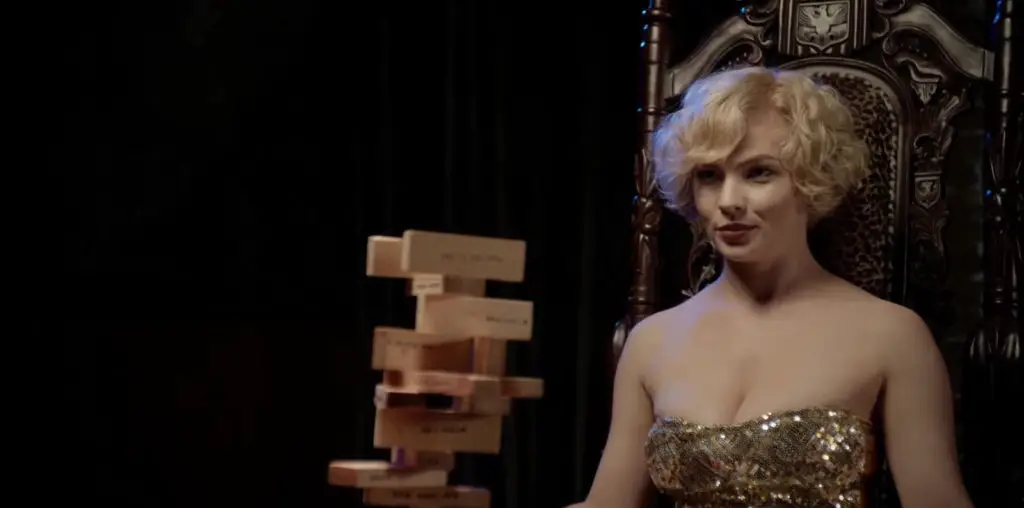
Something strange is happening at Apartment 201, but how did it all begin, and when, if ever, will it end? Filmmaker Jacques De Beaufort sets himself a heroic task with his newest feature, Sanctum and Sacrum, and, based upon the film’s title, lives will be lost… perhaps…
The story begins at sea, where the beautiful but fierce Felicia (Christina Jolie Breza) emerges from the waves, as if a dark force, ready for battle. We meet her again, at Apartment 201, veiled in black, as she prepares to sexually encounter, or assault, someone weaker than she. Her prey, since that’s what he seems, is her boyfriend, Amadeo (David Kandelaki), a moodily sensitive young man, dressed in white.
In this very same apartment, another couple resides. Yet interestingly, neither pair seems aware of the other. The woman is Sasha (Kenyon Page), a seemingly sweeter version of Felicia, draped in white, but equally compelling. Sasha’s partner is Raffi (Jacques De Beaufort), a mysterious man in black, whose power far surpasses Sasha’s or anyone else who attempts to defy him—or so it seems…
If things seem non-committal and a bit like a sojourn to Hell and back, it’s because that’s what appears to transpire, in this ostensibly mundane little dwelling. Here, in the confines of its tiny space, walls seem to constrict and contract, allowing ingress and egress of darkness, light, all of life’s furies, and more.
There is much in the way of religion, or the occult, in De Beaufort’s movie, depending upon interpretation. For example, the apartment’s number, 201, which may be analyzed according to Kabballah, or ancient numerology. Also, both Felicia and Sasha enjoy the company of a serpent, and intriguingly, the slithering creature never attempts to harm either woman. After sessions with the encircling viper, Felicia carries a large black-shelled object, while Sasha envelops its whiter version. Disturbingly, these entities resemble living, pulsating, eggs.
Additional symbolism in Sanctum and Sacrum can be seen in the dice Sasha likes to roll, and in the crystal triangle that may be interpreted as the sacrum bone, or sacred life force. It is this very portion of the human anatomy that some offer in sacrifice, to beings higher than they.
So do all these happenings make for a thrilling movie?
In my opinion, yes and no—thereby making Sanctum and Sacrum neither here nor there in terms of truly moving or frightening for its viewers.
Beautifully written, and based upon highly provocative, philosophical concepts, this film should exude the chilling brilliance that would make even David Lynch quiver in horror, but it doesn’t because of certain weaknesses in construct. For one thing, special effects editing lacks the subtlety to flow seamlessly, making heavy-handed images that do not transition believably into other dimensions. Since the subject of time and space is critical in this movie, this major flaw in imagery is problematic. To camouflage these issues, the filmmaker may better have opted for grainy, black and white cinematography, as opposed to color.
Other sources of weakness include too much dialogue in relation to necessary silent moments, and far too many explanatory voiceovers. In my opinion, V.O.s should be used minimally and strategically. If not, they tend to make a film too academic. Because of the uniqueness and fascination of Sanctum and Sacrum’s subject matter, it’s best to let viewers use their own imaginations.
In spite of its flaws, I’m impressed with De Beaufort’s ambition in producing such an artistic and philosophical work, and would love to see him take on another such venture in the future.
This film was submitted for review through our Submission for Review system. If you have a film you’d like us to see, and we aren’t already looking into it on our own, you too can utilize this service.
